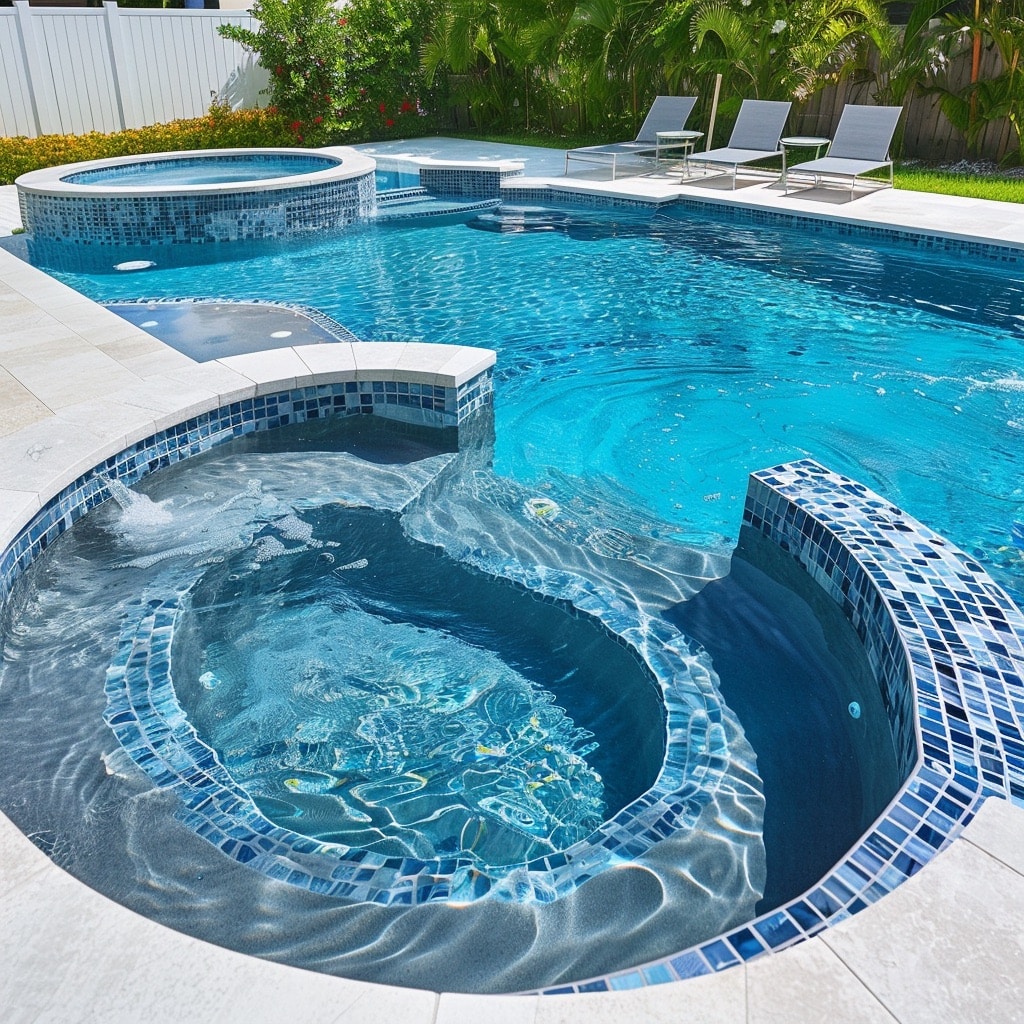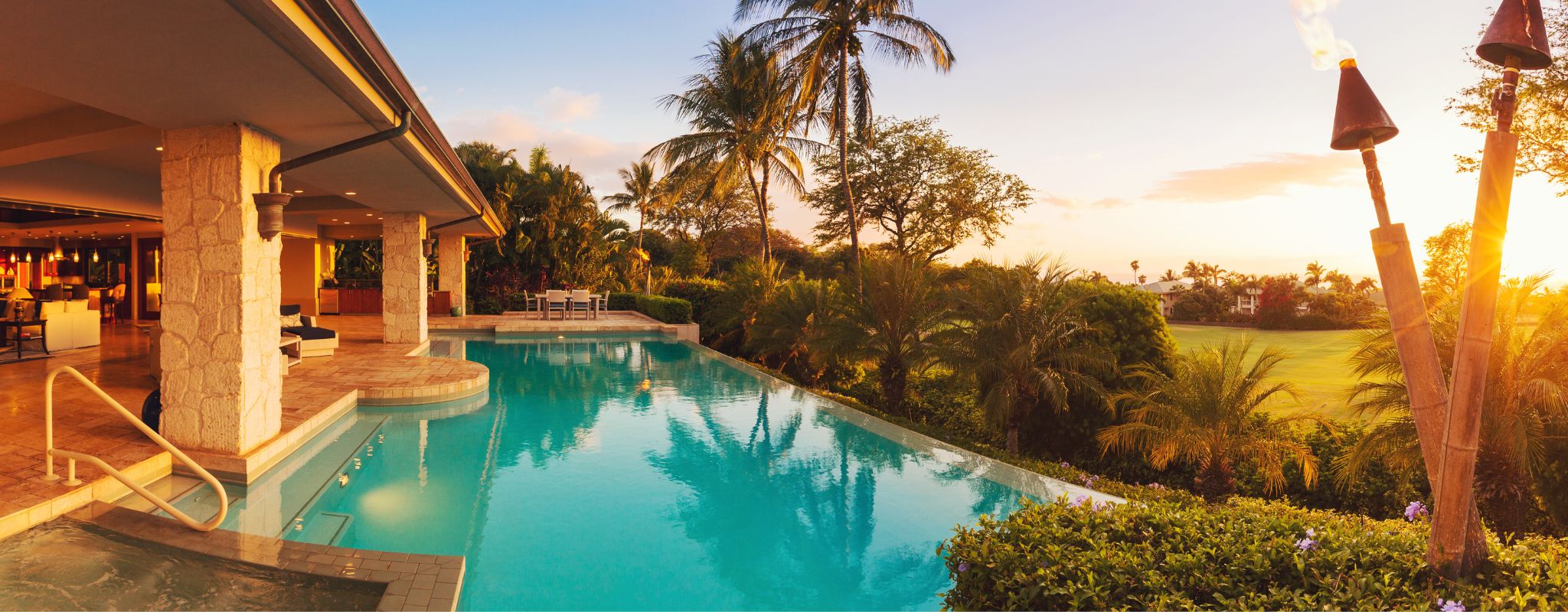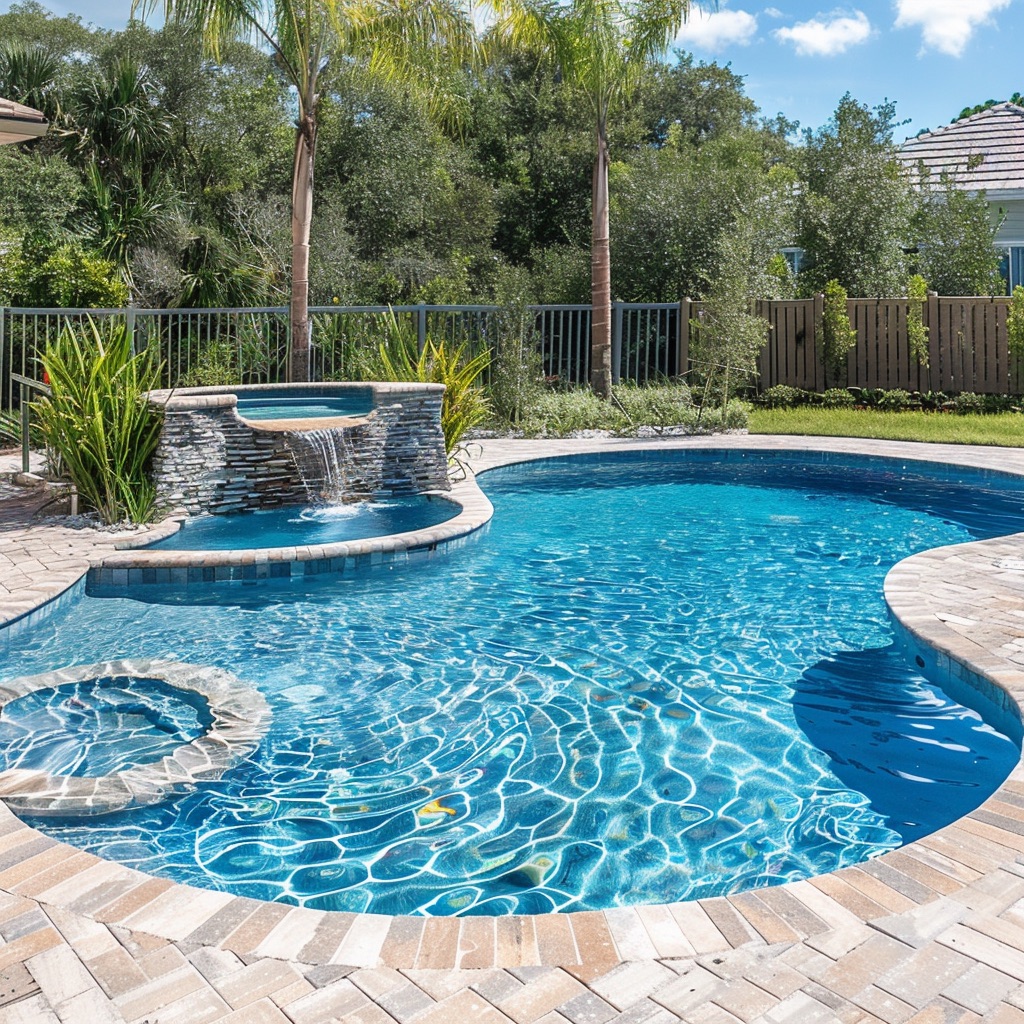When considering where to place your above-ground pool, concrete can be an excellent choice. It provides a stable, flat surface that ensures its longevity and safety. This guide will walk you through the essential tips and considerations for placing an above-ground pool on concrete, ensuring a successful installation and enjoyable experience.

Why Choose Concrete for Your Above-Ground Pool?
Concrete offers numerous benefits as a foundation for above-ground pools:
- Stability: Concrete is a stable surface that prevents shifting or settling, which can occur with other foundations like soil or grass.
- Durability: A concrete base withstands weather elements and weight, ensuring your pool remains level and secure.
- Ease of Maintenance: Concrete is easy to clean and maintain, preventing the growth of grass or weeds around the pool area.
Preparing the Concrete Surface
- Inspect the Concrete: Ensure the concrete surface is free from cracks, dips, or uneven areas that could compromise the pool’s stability.
- Clean the Area: Remove any debris, dirt, or objects that could damage the pool liner.
- Level the Surface: Use a level to check that the entire surface is even. Uneven surfaces can lead to structural issues with your pool.

Installing the Above-Ground Pool on Concrete
Materials Needed
- Pool pad or foam padding
- Pool liner
- Pool frame and components
- Level
- Tape measure
- Chalk or marker
Steps to Follow
- Mark the Area: Use chalk or a marker to outline where the pool will be placed.
- Place the Pool Pad: Lay down a pool pad or foam padding to protect the pool liner from abrasions and provide cushioning.
- Assemble the Frame: Follow the manufacturer’s instructions to assemble the pool frame, ensuring all parts are securely connected.
- Install the Liner: Carefully lay the pool liner inside the frame, smoothing out any wrinkles or folds.
- Fill the Pool: Gradually fill the pool with water, checking periodically to ensure the liner remains smooth and the frame stays level.

Maintenance Tips
Maintaining a pool on concrete is straightforward but requires regular attention to ensure it stays in good condition:
- Regular Cleaning: Sweep the concrete surface around the pool to keep it free of debris.
- Check for Wear: Periodically inspect the pool liner and padding for signs of wear or damage.
- Chemical Balance: Maintain the proper chemical balance in your pool to prevent algae growth and prolong the life of the liner.
Safety Considerations
- Non-Slip Surface: Consider applying a non-slip coating to the concrete around the pool to prevent accidents.
- Secure the Pool Area: Install a fence or barrier to keep children and pets away from the pool when not in use.
- Proper Drainage: Ensure there is adequate drainage around the pool area to prevent water from accumulating on the concrete, which can be hazardous.
Enhancing Your Pool Area
Make your pool area a relaxing retreat with these additional features:
- Outdoor Furniture: Add comfortable seating and tables for lounging and entertaining.
- Shade Options: Use umbrellas, pergolas, or canopies to provide shade and protection from the sun.
- Lighting: Install outdoor lighting for evening swims and to enhance the ambiance of your pool area.
- Landscaping: Incorporate plants, flowers, and other landscaping elements to create a beautiful and inviting space around your pool.

Common FAQs
Q: Can I place an above-ground pool directly on concrete without a pad?
A: It is not recommended to place an above-ground pool directly on concrete without a pad, as the concrete can damage the pool liner. A pool pad provides necessary protection and cushioning.
Q: How do I level my concrete surface for an above-ground pool?
A: Use a level and shims to even out any low spots. If the surface is significantly uneven, you may need to apply a leveling compound.
Q: What type of padding is best for an above-ground pool on concrete?
A: Foam padding or a pool-specific protective pad is ideal, as they provide a smooth surface and additional cushioning for the pool liner.
Q: How do I prevent my pool from slipping on the concrete?
A: Ensure the pool frame is securely assembled and the liner is properly installed. Adding a non-slip surface to the concrete can also help prevent movement.
Q: Can I build a deck around my above ground pool on concrete?
A: Yes, building a deck around your pool is a great way to enhance the area and provide easy access. Ensure the deck is securely anchored and meets local building codes.
Q: How often should I inspect my pool and concrete base?
A: Regularly inspect your pool and concrete base at least once a month for any signs of wear or damage. Promptly address any issues to maintain the safety and longevity of your pool.
By following these tips and guidelines, you can ensure your above-ground pool on concrete is both safe and enjoyable, providing endless fun for you and your family.


